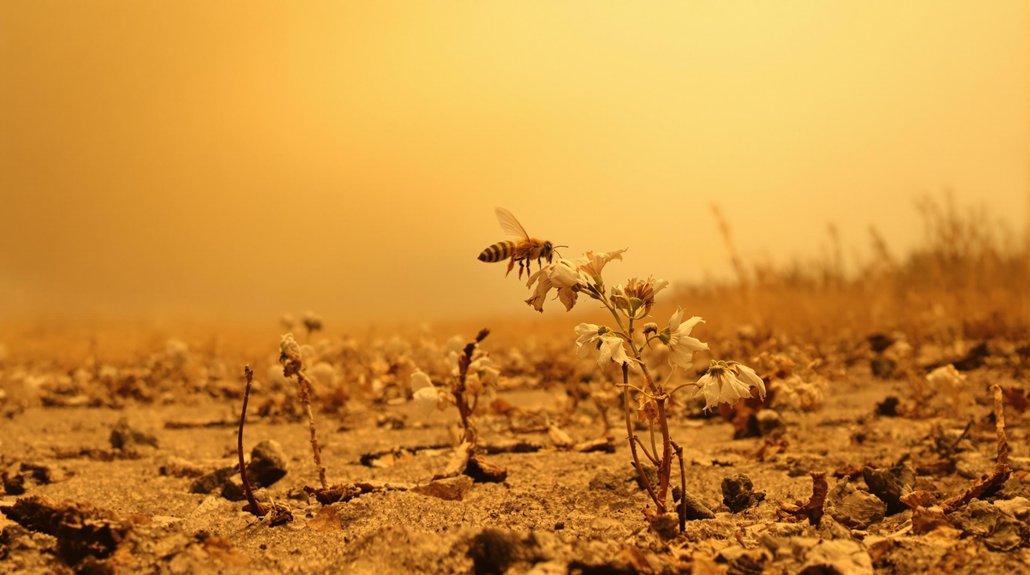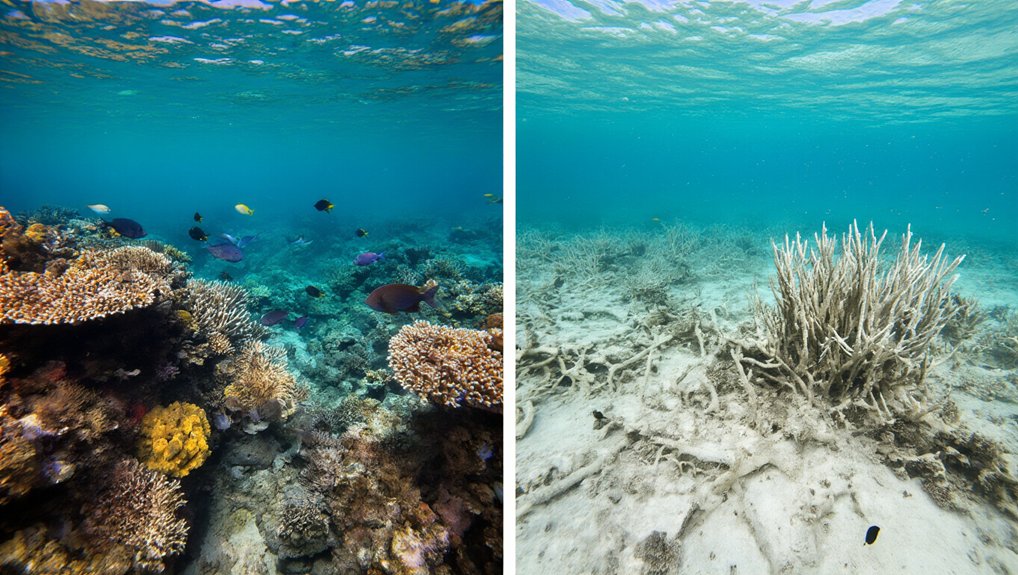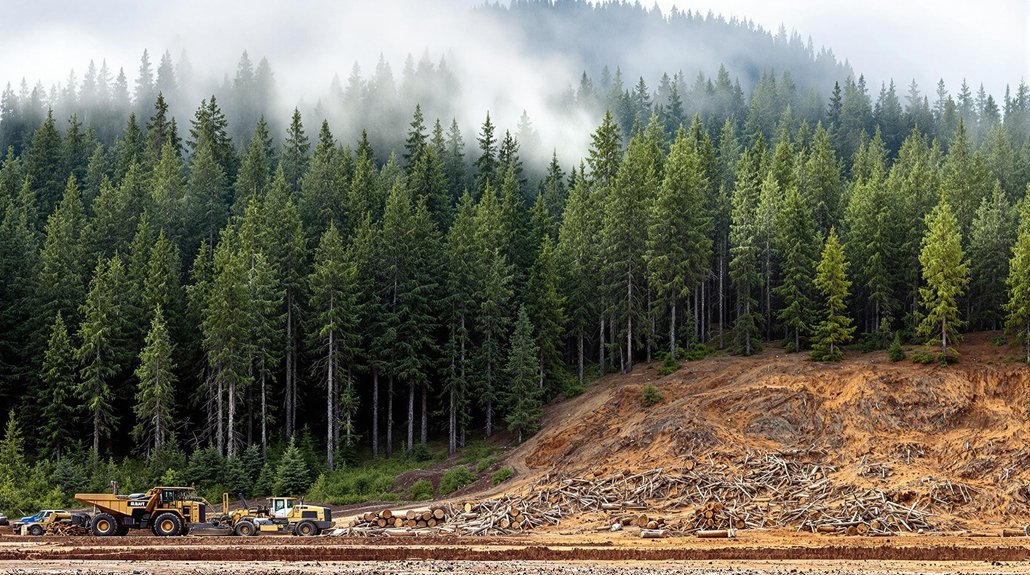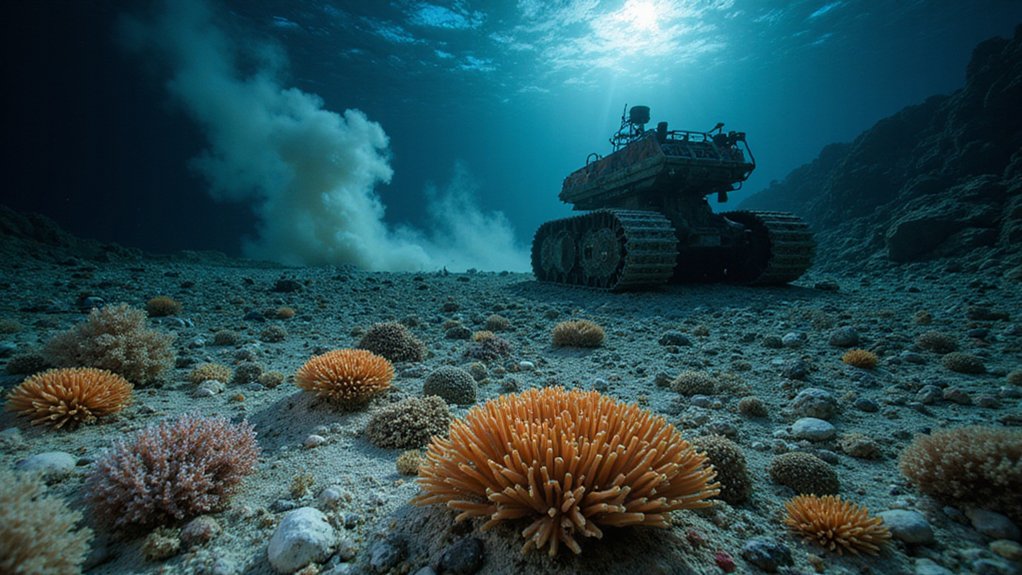While the deep oceans remain largely unexplored by humans, they’re not untouched by our industrial aspirations. Scientists examining past deep-sea mining operations have delivered a grim verdict: the damage cannot be undone. Not now, not ever.
Mining activities targeting polymetallic nodules and sulfides directly obliterate delicate ecosystems that took millennia to form. These aren’t just random patches of mud – they’re home to complex communities of filter-feeders, sponges, and countless species we haven’t even named yet. The mineral lifting system creates significant disturbance to the seabed during extraction operations. Imagine bulldozing a forest before cataloging its plants. That’s what we’re doing, except underwater. And much darker.
When we destroy deep-sea ecosystems, we’re erasing life’s library without reading it first.
The evidence is damning. Seabed scars remain visible 44 years after mining operations. Forty-four years! Some biological recovery has finally begun after four decades, but the keyword is “some.” The original ecosystem? Gone for good.
It’s not just the immediate destruction that’s concerning. Mining kicks up massive sediment plumes that travel far beyond the mining site. These clouds smother marine life, clog filter-feeders, and spread heavy metals through ocean currents. Recent research from the UK’s National Oceanography Centre found that these sediment plumes had limited long-term physical impacts on the surrounding environment. Marine creatures can’t exactly evacuate when their neighborhood turns toxic.
Unique ecosystems like hydrothermal vents and seamounts – literal hotspots of endemic species – are prime targets for extraction. When we destroy these habitats, we’re not just killing individual organisms. We’re potentially erasing entire species from Earth’s biological record.
The damage cascades through entire oceanic systems. Disturbed sediments alter carbon sequestration patterns. Biogeochemical cycles falter. Acidification increases. The ocean’s ability to regulate our planet’s chemistry takes a hit. Unlike geothermal energy which operates with minimal land use and environmental impact, deep-sea mining permanently scars vast areas of ocean floor.
What’s most frustrating? We’re tampering with essential planetary systems we barely understand. The deep sea plays crucial roles in nutrient cycling and climate regulation that scientists are still working to comprehend.
But hey, at least we’ll have more metals for our smartphones, right? The price tag just happens to be permanent, irreversible ecological damage.
References
- https://www.frontiersin.org/journals/marine-science/articles/10.3389/fmars.2025.1598584/full
- https://noc.ac.uk/news/new-study-reveals-long-term-impacts-deep-sea-mining-first-signs-biological-recovery
- https://www.oceans-research.com/deep-sea-mining-threats-alternatives/
- https://www.bgs.ac.uk/news/new-study-reveals-long-term-effects-of-deep-sea-mining-and-first-signs-of-biological-recovery/
- https://www.wri.org/insights/deep-sea-mining-explained








